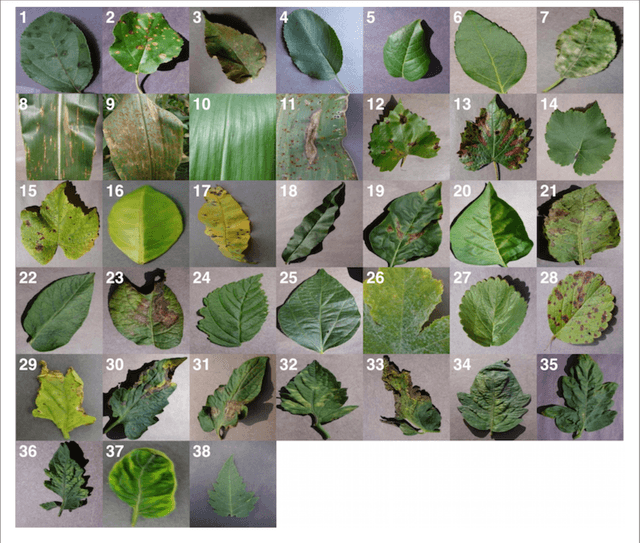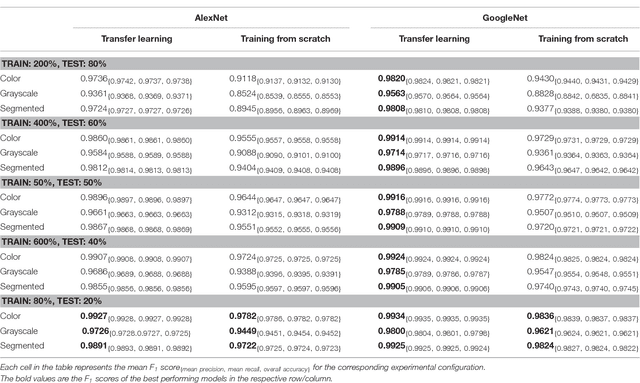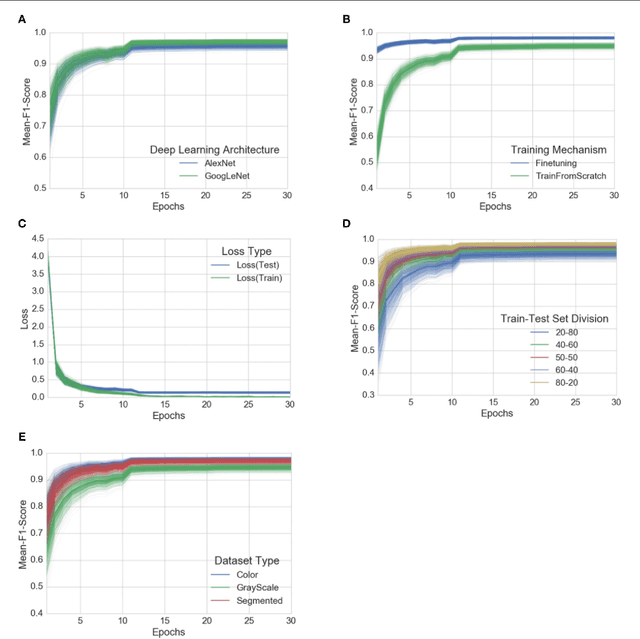David Hughes
Assessing a mobile-based deep learning model for plant disease surveillance
May 04, 2018



Abstract:Convolutional neural network models (CNNs) have made major advances in computer vision tasks in the last five years. Given the challenge in collecting real world datasets, most studies report performance metrics based on available research datasets. In scenarios where CNNs are to be deployed on images or videos from mobile devices, models are presented with new challenges due to lighting, angle, and camera specifications, which are not accounted for in research datasets. It is essential for assessment to also be conducted on real world datasets if such models are to be reliably integrated with products and services in society. Plant disease datasets can be used to test CNNs in real time and gain insight into real world performance. We train a CNN object detection model to identify foliar symptoms of diseases (or lack thereof) in cassava (Manihot esculenta Crantz). We then deploy the model on a mobile app and test its performance on mobile images and video of 720 diseased leaflets in an agricultural field in Tanzania. Within each disease category we test two levels of severity of symptoms - mild and pronounced, to assess the model performance for early detection of symptoms. In both severities we see a decrease in the F-1 score for real world images and video. The F-1 score dropped by 32% for pronounced symptoms in real world images (the closest data to the training data) due to a drop in model recall. If the potential of smartphone CNNs are to be realized our data suggest it is crucial to consider tuning precision and recall performance in order to achieve the desired performance in real world settings. In addition, the varied performance related to different input data (image or video) is an important consideration for the design of CNNs in real world applications.
Using Transfer Learning for Image-Based Cassava Disease Detection
Aug 01, 2017



Abstract:Cassava is the third largest source of carbohydrates for human food in the world but is vulnerable to virus diseases, which threaten to destabilize food security in sub-Saharan Africa. Novel methods of cassava disease detection are needed to support improved control which will prevent this crisis. Image recognition offers both a cost effective and scalable technology for disease detection. New transfer learning methods offer an avenue for this technology to be easily deployed on mobile devices. Using a dataset of cassava disease images taken in the field in Tanzania, we applied transfer learning to train a deep convolutional neural network to identify three diseases and two types of pest damage (or lack thereof). The best trained model accuracies were 98% for brown leaf spot (BLS), 96% for red mite damage (RMD), 95% for green mite damage (GMD), 98% for cassava brown streak disease (CBSD), and 96% for cassava mosaic disease (CMD). The best model achieved an overall accuracy of 93% for data not used in the training process. Our results show that the transfer learning approach for image recognition of field images offers a fast, affordable, and easily deployable strategy for digital plant disease detection.
* 10 pages, 4 figures
Using Deep Learning for Image-Based Plant Disease Detection
Apr 15, 2016



Abstract:Crop diseases are a major threat to food security, but their rapid identification remains difficult in many parts of the world due to the lack of the necessary infrastructure. The combination of increasing global smartphone penetration and recent advances in computer vision made possible by deep learning has paved the way for smartphone-assisted disease diagnosis. Using a public dataset of 54,306 images of diseased and healthy plant leaves collected under controlled conditions, we train a deep convolutional neural network to identify 14 crop species and 26 diseases (or absence thereof). The trained model achieves an accuracy of 99.35% on a held-out test set, demonstrating the feasibility of this approach. When testing the model on a set of images collected from trusted online sources - i.e. taken under conditions different from the images used for training - the model still achieves an accuracy of 31.4%. While this accuracy is much higher than the one based on random selection (2.6%), a more diverse set of training data is needed to improve the general accuracy. Overall, the approach of training deep learning models on increasingly large and publicly available image datasets presents a clear path towards smartphone-assisted crop disease diagnosis on a massive global scale.
 Add to Chrome
Add to Chrome Add to Firefox
Add to Firefox Add to Edge
Add to Edge